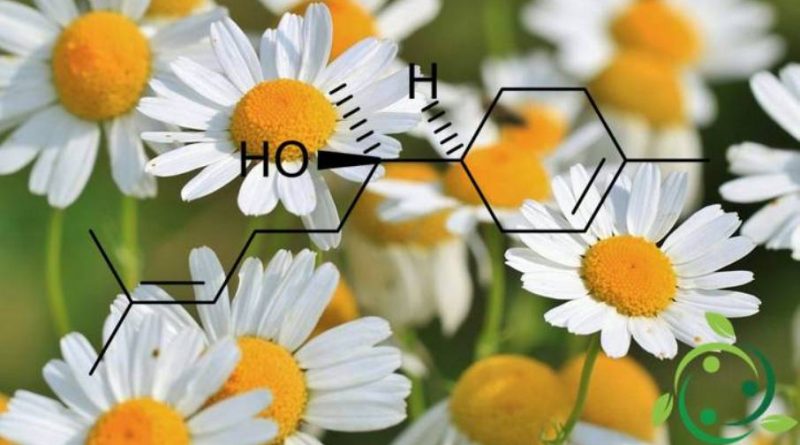Bisabolol
Bisabolol
Α-bisabolol, commonly called bisabolol, which in the IUPAC terminology is: (R) -6-methyl-2 – ((R) -4-methylcycloex-3-enyl) hept-5-en-2-ol and the whose alternative name is Levomenol is a monocyclic sesquiterpene natural alcohol, with brute or molecular formula: C15H26O, which is formed by neutralization with water of the bisabolile cation.
Bisabolol is the main component (10-25%) of the essential oil of chamomile derived from fresh or dried flower heads.
The bisabolol can also be extracted from other plants, and in particular, it can be obtained by direct distillation of the natural oil from the Candeia tree (Vanillosmopsis Erythropappa), a plant native to Brazil whose flowers have a scent very similar to vanilla.
Bisabolol has softening and calming properties well known for centuries and therefore is used in many medications. It has soothing and anti-reddening properties; eliminating skin inflammation, it has a softening effect, especially useful on particularly delicate, irritated, damaged skin exposed to the sun and chapped lips.
This natural alcohol is characterized primarily by extreme skin tolerability.
Bisabolol cannot be used as such directly on the skin but must be mixed in a preparation before application: it is cold added at the end of the preparation during the process of making emulsions such as after shave creams, soothing and after-sun creams, lip balms, baby care products and post-depilatory creams.
It should be added in the amount of 0.05-0.1% (10-20 drops), but it can be up to 1% based on the soothing force that is to be given to the final product.
Thus summarizing the properties and uses of bisabolol are:
– Lentive: thanks to its high skin tolerability, it is used in many products for sensitive skin and for children;
– Anti-inflammatory and softening: it has a calming power, effective on skin reddened by the sun, wind or cold. Protects irritated skin;
– Cicarizzante and repairer: even in small doses it is very effective on damaged skin, for example on chapped lips;
– Antifungal and antibacterial: used for anti-acne products and for oral hygiene;
– Depigmenting: acts on skin pigmentation disorders.
Warning: The information given is not medical advice and may not be accurate. The contents are for illustrative purposes only and do not replace medical advice.

